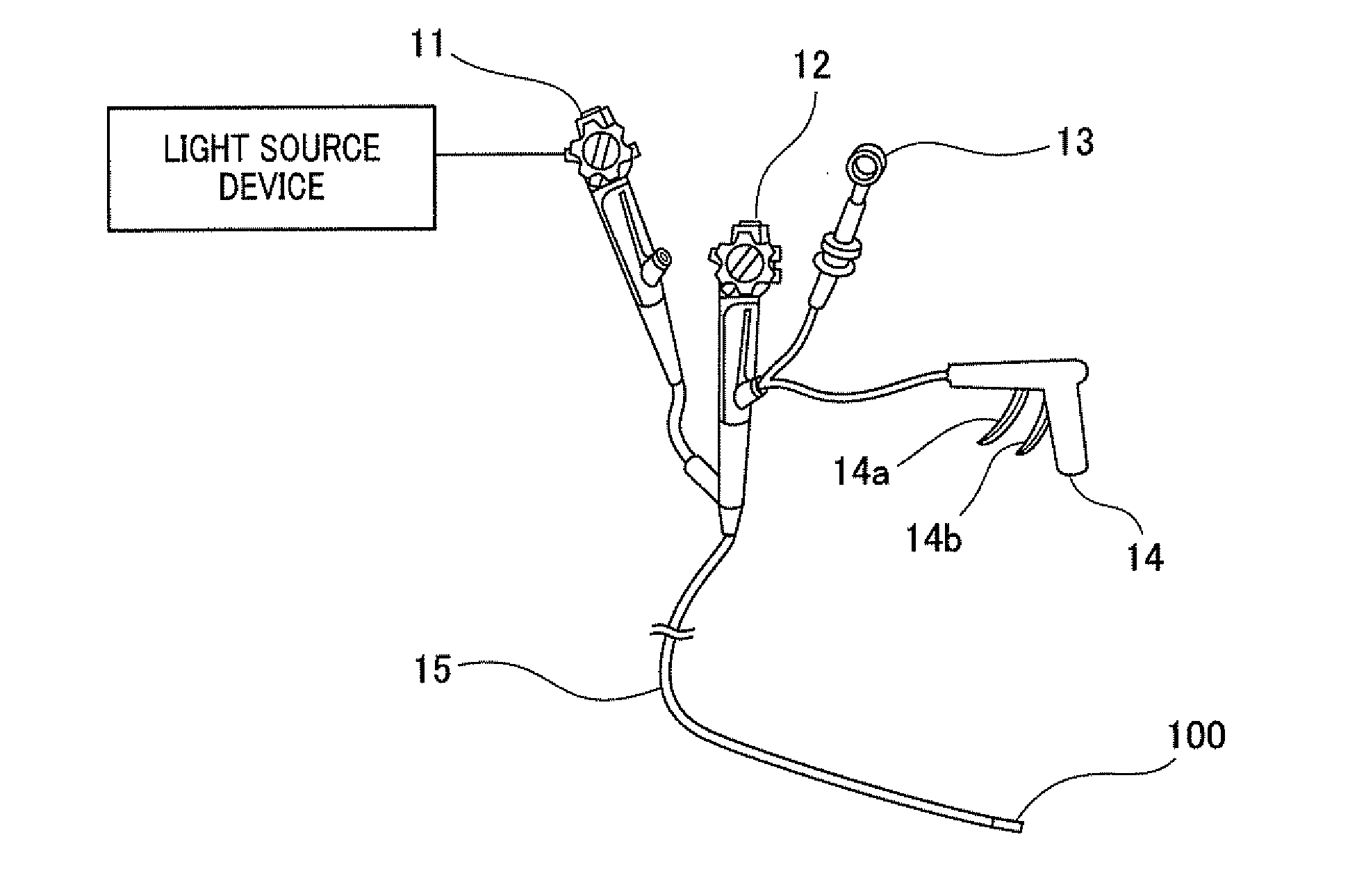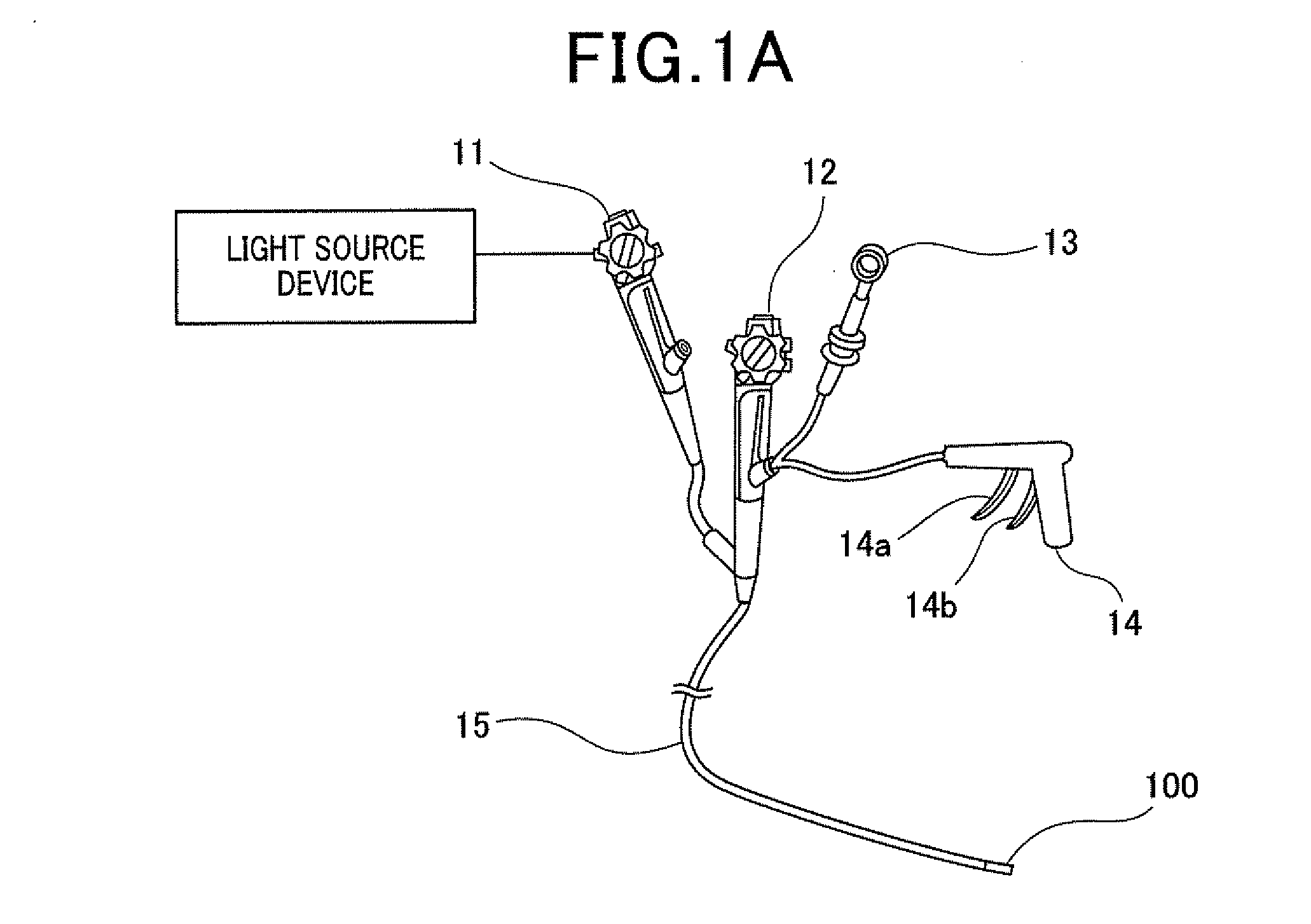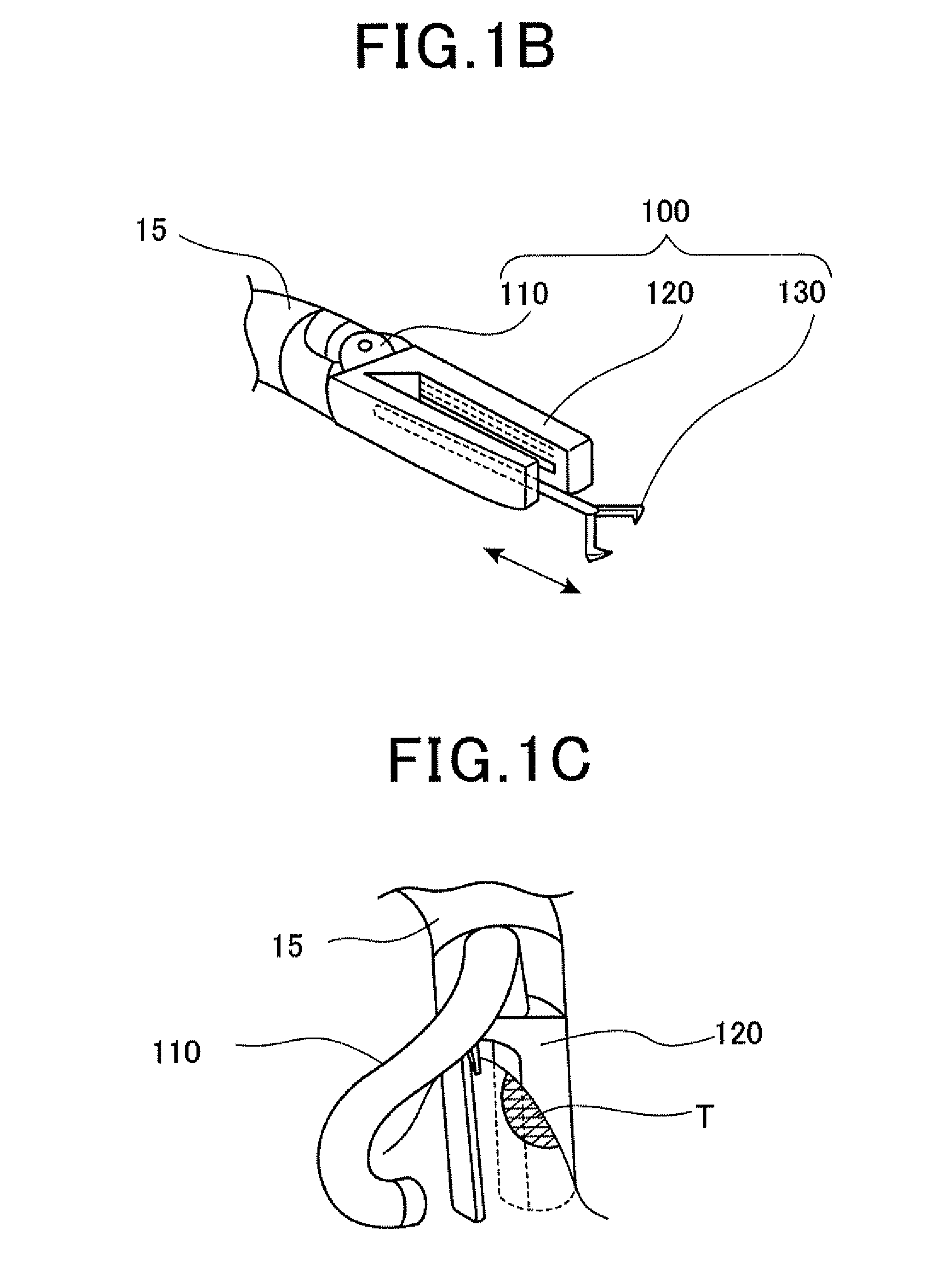Operative method for lumen
a technology of a lumen and a lumen slit, which is applied in the field of operative methods for a lumen, can solve the problems of cancer cells scattering contents of the lumen leaching into the abdominal cavity, and risk of damage to other organs within the abdominal cavity,
- Summary
- Abstract
- Description
- Claims
- Application Information
AI Technical Summary
Benefits of technology
Problems solved by technology
Method used
Image
Examples
first embodiment
Operative Method
[0046]Next, an operative method according to a first embodiment will be described with reference to FIG. 3 to FIG. 5, and FIG. 6A to FIG. 6K. Here, as an example, an instance is described in which a lesion T (such as a tumor having a diameter of 20 mm) present within the gastric wall, such as that shown in FIG. 5, is excised. In this instance, the full-thickness of the gastric wall (mucosal layer, submucosal layer, muscular layer, and the like) is excised. For illustrative convenience, the lesion T is shown on the surface in the drawings. However, the present invention is not necessarily limited to instances in which the lesion is completely present on the mucosal surface. In some instances, the lesion is formed within the gastrointestinal tract tissue, such as in the submucosal layer.
[0047]FIG. 3 is a flowchart of an example of the operative method. FIG. 6A to FIG. 6K are schematic diagrams for describing the state of the lesion T in correspondence with the flowchar...
second embodiment
[0061]Next, an operative method according to a second embodiment will be described with reference to FIG. 7.
[0062]FIG. 7 shows a state in which a tissue piece including the lesion T is excised by the linear stapler 120 (FIG. 7(a)). In the example shown in FIG. 7, of the ends of the cut edge KL1 formed by the first stapling procedure, an end XP (referred to, hereinafter, as an “intersecting end”) that intersects with the cut edge KL2 formed by another (second) stapling procedure is formed projecting towards the gastrointestinal tract tissue side. In this instance, the folded lumen wall that is located further inward than the intersecting end XP is sandwiched and fastened by a clip 21 from both sides in the thickness direction, such as to seal the intersecting end XP. The clip 21 shown in FIG. 7 has a pair of clamping sections 21a and a connecting section 21b connected to the pair of clamping sections 21a. The connecting section 21b generates a clamping force in the pair of clamping s...
third embodiment
[0064]The method for sealing a through-hole formed in the gastrointestinal tract wall by the intersecting end XP is not limited to that shown in FIG. 7. A method shown in FIG. 8A may also be used. FIG. 8A (a) is a schematic diagram of an example of a method for forming the cut edges and joined sections. FIG. 8A (b) is a diagram of the lesion T being excised by the linear stapler 120 in an instance in which the method shown in FIG. 8A (a). In a manner similar to FIG. 6K, FIG. 8A (b) shows a state in which the tissue is folded such that the inner surface of the gastrointestinal tract faces outward and the outer surface of the gastrointestinal tract faces inward.
[0065]For example, as shown in FIG. 8A, when the cut edges KL1 and KL2 are formed to intersect with each other, the steps of joining and cutting are performed such that each intersecting end XP1, XP2 of each cut edge KL1, KL2 is positioned further towards the respective other intersecting cut edge KL2, KL1 than the joined secti...
PUM
 Login to View More
Login to View More Abstract
Description
Claims
Application Information
 Login to View More
Login to View More - R&D
- Intellectual Property
- Life Sciences
- Materials
- Tech Scout
- Unparalleled Data Quality
- Higher Quality Content
- 60% Fewer Hallucinations
Browse by: Latest US Patents, China's latest patents, Technical Efficacy Thesaurus, Application Domain, Technology Topic, Popular Technical Reports.
© 2025 PatSnap. All rights reserved.Legal|Privacy policy|Modern Slavery Act Transparency Statement|Sitemap|About US| Contact US: help@patsnap.com



